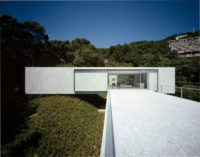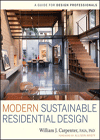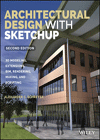Architects Masahiro and Mao Harada, the principals of Mount Fuji Architects Studio, are mountain people. Veteran climbers, they hike parts of the Japan Alps annually with their office staff and named their firm after the country’s most venerated peak. With the arrival of bigger commissions, their practice, too, has taken off on a vertical ascent.
Founded in 2004, the husband-and-wife team got their foothold designing and building modest works with their own hands. Named XXXX House (for its crisscrossed frame), their first project was a one-room studio created for Masahiro’s father, a retired ship designer turned ceramist. Made almost entirely from laminated sheets of plywood, the building was erected with the aid of able-bodied friends willing to sacrifice a few vacation days. Together they turned the two-dimensional planes into eight three-dimensional, but nonrectangular, frames. Pinned at their cross points, these infrastructural elements add up to a 237-square-foot tube of space with a unique, X-shaped profile.
“We used to have a strong tradition of making our entire living environment from readily available materials,” laments Masahiro. “That ability was lost, but we hope to bring it back.” Mao could not agree more. The daughter of a hands-on architect who crafted a desk, bed, and even window frames for her childhood room, Mao decided to follow her father’s career path by studying and making architecture. Masahiro also considered his father’s field and even studied nautical engineering alongside architecture. But in the end, buildings beat out boats.
After graduating from the Shibaura Institute of Technology, Mao focused on T-shirt design, art projects, and short stints in architectural offices, at home and overseas. Meanwhile, Masahiro spent three years working for Kengo Kuma, followed by a year and a half in the Barcelona office of José Antonio Martínez Lapeña and Elías Torres. Under Kuma’s tutelage, he gleaned firsthand knowledge of bamboo, thatch, and other indigenous construction materials while working on a variety of buildings in Japan.
In terms of career development, however, one of the most pivotal experiences for Masahiro was a competition for a self-built dwelling, for which the young architect united his knowledge of materials and desire to create with his own hands. The result was a biodegradable building supported by arched bamboo ribs blanketed with soil and weeds. Called Spoilable House, the entry took second place and was selected for exhibition, enabling Masahiro to actually test out his scheme by building a version of the house for the display. An implicit goal of this project was to harmonize natural forces and human need — a central tenet of the firm’s architecture today. “It’s like boat design, where all parts have to balance the pressures of wind and water with function,” explains Masahiro. “To me, that kind of object is beautiful.”
Applying this approach to structural design, the architects use climate, gravity, and other environmental criteria to shape their buildings. For example, wrapped by a concrete wall with a saw-toothed profile, a house dubbed Rainy/Sunny was designed to wear well over time, regardless of the weather. A current residential project called Tree House features a radiating canopy of wood ribs that defy the earth’s downward pull. Wrapping around a central, trunklike column that anchors them, the ribs step up sequentially, creating four ceiling heights that correspond with the home’s functional quadrants — an updated version of the traditional ta no ji square plan named after the Chinese character for “rice paddy.”
Today, Mount Fuji Architects Studio continues to produce houses and other small-scale projects, such as street furniture that will be installed in front of the Towada Art Center, designed by Ryue Nishizawa. But a recent spate of larger commissions, including a multistory commercial building in suburban Yokohama, are rapidly elevating the firm to new heights.





















